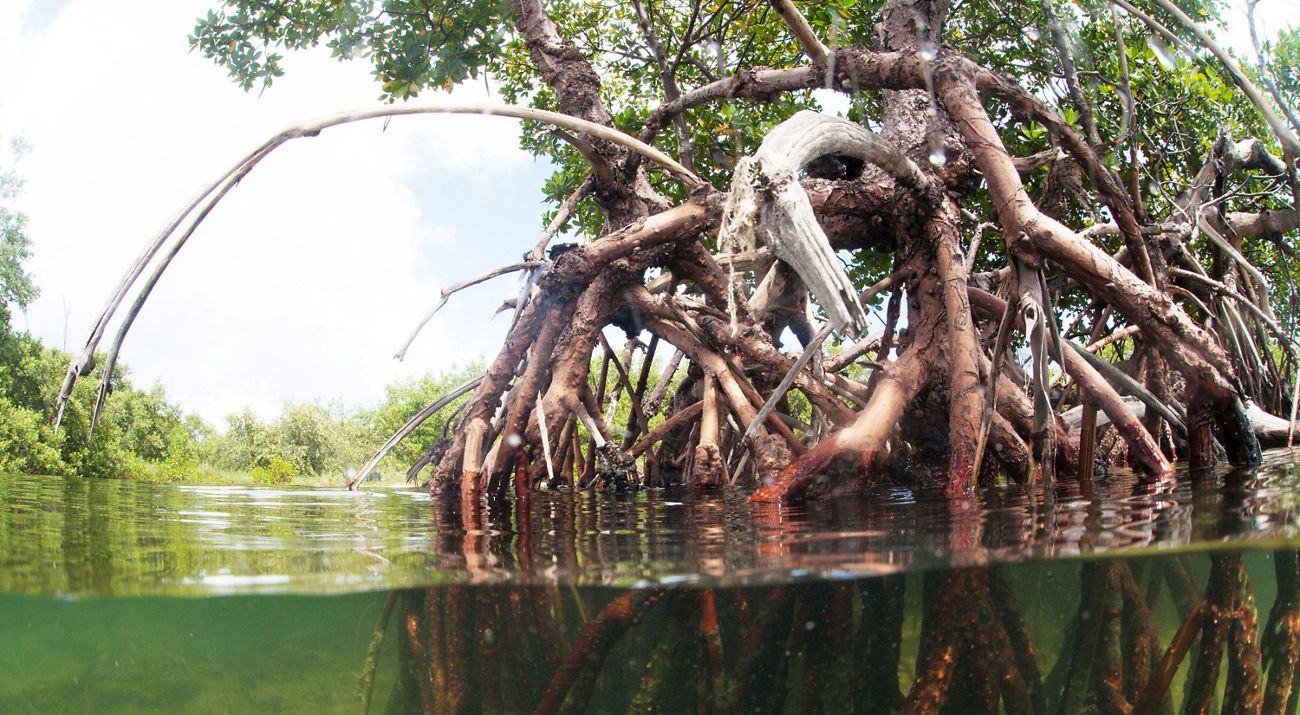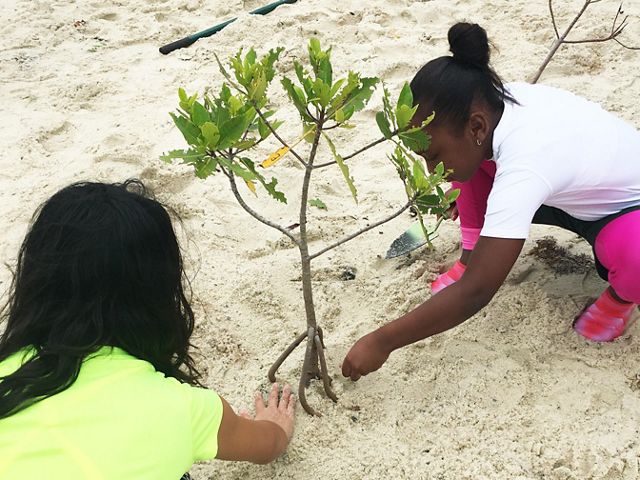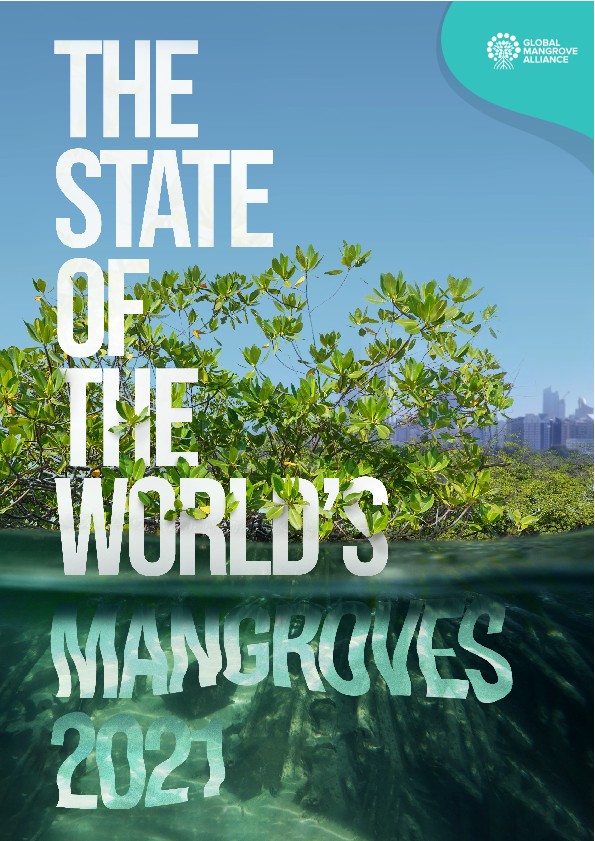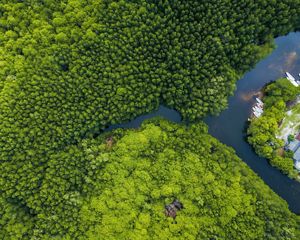
State of the World’s Mangroves
A comprehensive new report shows the benefits of mangroves—and how they can be saved.
Mangroves are one of the world’s most important ecosystems. Healthy mangrove forests are hotspots of biodiversity, cornerstones of climate resilience and a source of livelihoods for coastal communities worldwide. They are carbon stores, fish factories, coastal defenses and more, conveying incalculable benefits to both people and planet. But these critical systems have been threatened for decades, with the total footprint of mangroves declining over the past 35 years, largely due to human activity.

Yet there are reasons for hope. The average rates of global mangrove loss are now slowing, and mangroves are being restored across their endemic lands despite external threats. But to fully recover mangrove populations and reap their benefits for generations to come, people worldwide will need to come together as allies for these critical systems.
The Global Mangrove Alliance (GMA) illustrates how powerful these global partnerships can be. The GMA is a joint effort of 27 organizations, including The Nature Conservancy (TNC), working to accelerate a revival of mangrove forests across the globe. “By joining the GMA, TNC is bringing its science and policy expertise to accelerate crucial mangrove restoration worldwide,” says Emily Landis, Coastal Wetlands Strategy Lead at TNC. “Likewise, we are learning from others who have decades of experience, so we do not duplicate each other’s failures but draw strength from our collective knowledge.”
The State of the World’s Mangroves, a new report by the GMA that was coauthored by TNC, is a guide for NGOs, scientists and other stakeholders to the current condition of global mangrove populations and the best pathways forward to recovering these remarkable habitats.
Here are three important things to know from The State of the World’s Mangroves.
Download
The latest science on mangroves around the world and how we can support their conservation and restoration.
Download1. Mangroves protect the lives and livelihoods of millions of people
Mangroves & Disaster Mitigation
A study showed mangroves prevent economic loss and protect lives from hurricanes.
Download the reportRelated Report: In Florida, mangroves have been keystones of disaster mitigation and climate adaptation; in 2019, TNC co-authored a report concluding that mangroves prevented $1.5 billion in direct flood damages and protected over half a million people during Hurricane Irma in 2017.
Mangrove forests are also productive habitats for shrimps, crabs and many species of fish, which are caught by small-scale fishers and distributed within local communities. It is estimated that there are over 4.1 million mangrove fishers globally, whom countless others rely upon for jobs and nutrition.
In Papua New Guinea, for example, women reliant on mangroves have created the Mangoro Market Meri Program (meaning Mangrove Market Women) to help local women manage mangroves sustainably. TNC aids the Mangoro Market Meri by helping them develop and trial business and conservation plans and supporting ways to link their economic livelihoods with mangrove protection.

2. Mangroves are crucial for addressing the climate and biodiversity crises
Right now, countries are committing to ambitious targets to fight climate change and biodiversity loss—and they will need mangroves in order to meet these commitments.
In addition to their role in climate adaptation, mangroves are powerhouses of climate mitigation. With tightly-woven root systems and dense thickets of foliage, mangroves sequester carbon at four times the rate of terrestrial forests and can convert carbon dioxide to organic carbon at higher rates than almost any other habitat on Earth. Healthy mangrove forests are able to store the equivalent of 21 gigatons of carbon; restoring degraded mangroves could lead to the sequestration of an additional 1.3 gigatons. This sum is equal to about three years of carbon emissions for a country like Australia.

3. It’s not too late to restore mangroves—with the right partnerships
Although mangroves have seen a decline over the past 35 years, these critical systems can still be protected. A recent scientific model estimated that 6,600 square kilometers of mangrove areas lost since 1996 are “highly restorable.”
To help guide global action for mangrove recovery, the GMA and partners have launched an online platform called the Global Mangrove Watch that provides near real-time data on where and what changes are occurring to mangroves across the world. The tool’s information on topography, soil conditions and hydrology can help various stakeholders direct mangrove restoration and spatially plan for the most effective climate and biodiversity strategies.
State of the World's Mangroves
A comprehensive report on the global conservation status and benefits of mangroves.
Download the reportTNC has been doing mangrove restoration work for decades, in countries from Mexico to Indonesia, but we need to expand our efforts. By compiling the latest science and distributing it to stakeholders around the world, The State of the World’s Mangroves report is an important new tool to advance these efforts.
Global Insights
Check out our latest thinking and real-world solutions to some of the most complex challenges facing people and the planet today.


